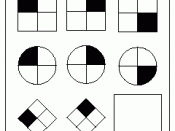Charles Spearman (1904) defined and developed a unilinear testing approach to general intelligence (g), which is based on a positive correlation among varying subjects like math, earth sciences and vocabulary. Gardner (1983) proposed there were multiple intelligences (MI), or seven areas of intelligence, linguistic, musical, logical-mathematical, spatial, bodily-kinesthetic, intrapersonal, and interpersonal, and that each person has more than one of these skills. While testing of g intelligence is still used to assess overall IQ, universities and corporations look at the wider consideration offered by Gardner.
Spearman's theory creates an environment that places strong emphasis on getting a high IQ score and high scores on a number of placement tests useful for schooling. However, as Gardner has said, these place too high an emphasis on IQ and test scores, and in ignores certain intelligences and abilities that people can bring to the workforce. Relying solely on IQ test scores not only can exclude an individual with superior a talent (g) from getting a proper education in the area of expertise, but can eliminate the individual from the education and professional arena altogether.
We are all endowed with multiple, genetically determined forms of intelligence that can be enhanced through practice and learning, yet this is ignored in the process of rewarding individuals for high IQ according to Spearman.
Unfortunately, MI theory is only just being put into practice at the educational level. Wallace Shilkus, a middle school technology education teacher in Illinois, "wanted to know how relevant technology education was to middle school students; whether his methods of instruction made a difference in the classroom; and whether Gardner's multiple intelligences had a role to play in the classroom." (Merrill, 2004, 6). Shilkus tied the in-class study to action research to document his teaching methods and benefits to his students in 2001, and...


